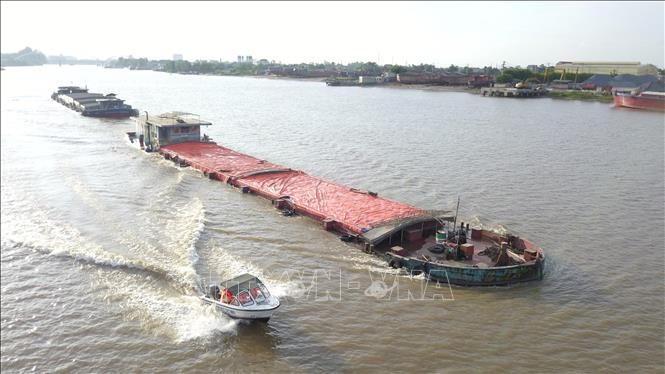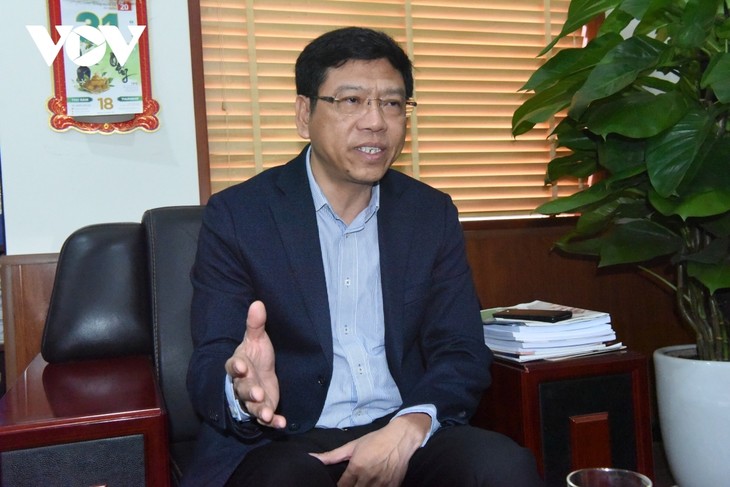(VOVWORLD) - Themed “Water for All”, this year’s International Day of Action for Rivers, on March 14, underlined the importance of water in every economy. 2,360 rivers and canals with a total length of 41,900 kilometers give Vietnam a great economic advantage. The transportation sector, provinces, and cities are making full use of inland waterway transport to bolster the national economy.
 Vietnam has 2,360 rivers and canals of 41,900 km long, a great advantage for economic development. (Photo: VNA) Vietnam has 2,360 rivers and canals of 41,900 km long, a great advantage for economic development. (Photo: VNA) |
With so many rivers and canals Vietnam ranks 4th in the world in waterway transport potential. The Mekong Delta region alone has 12 seaports and 35 wharves able to receive ships up to 20,000 DWT with a total capacity of 20-30 million tons a year. The delta has 57 inland waterway ports and some 4,000 wharves. This is the reason why it’s necessary to boost water transport’s market share while reducing road load and makes shipping cargo by water cheaper than shipping by road.
The waterway system will connect Ho Chi Minh City with all the southwestern provinces once the Cho Gao canal expansion project is completed. The Cho Gao canal, which connects the Tien Giang River with the Vam Co River, is a vital waterway of the Mekong Delta.
Duong Thanh Hung, Director of the Waterway Projects Management Board of the Ministry of Transport, said that once the entire Cho Gao canal expansion project is completed, it will increase profitability. It will handle up to 70 million tons of cargo per year – 80 million tons if the fleet of vessels is improved. Exports from the Mekong Delta go through the Saigon and Ba Ria-Vung Tau ports.
The 200-kilometer northern inland waterway transport route from Hai Phong city to Viet Tri city is convenient for transporting containers to seaports. Nguyen Xuan Sang, Deputy Minister of Transport, said at the end of the third quarter of 2021, the Vietnam Inland Waterways Administration was assigned to build a model inland waterway transport route from Hai Phong to Viet Tri.
“The route should meet the criteria for the number of cargo ships, administrative procedure reforms, and green transportation. We’ve worked with other agencies on a plan to ensure that all ships are facilitated by administrative procedures,” said Sang.
 Nguyen Xuan Sang, Deputy Minister of Transport (Photo: VOV) Nguyen Xuan Sang, Deputy Minister of Transport (Photo: VOV) |
In addition to building a model inland waterway transport route, there has been a focus on setting up closed transport from warehouses to seaports.
Tan Cang Que Vo inland port in Bac Ninh province, a strategically-located connecting point for goods exchange between Bac Ninh, Bac Giang, Thai Nguyen, and Hanoi and the seaports in Hai Phong, has invested in a fleet of tractors and water vehicles to take goods from warehouse to seaport and seaport to warehouse. Tan Cang Que Vo is an inland container depot that can clear import and export goods right at the port.
Deputy Minister Sang said the Ministry of Transport has included a proposal in its medium-term plan to complete the Cho Gao canal expansion project, develop a logistic transport corridor for the eastern and southwestern regions, and – in the north – upgrade and renovate Duong Bridge.
“We have high hopes for investment projects to address the bottlenecks faced by key waterway routes in the north and the south,” Sang noted.
The rapid growth of Vietnam's economy requires the proper development of all road, rail, aviation, and waterway transport systems. Developing inland waterway transport reduces pressure on road transport, reduces logistics costs, and contributes to the national economy.